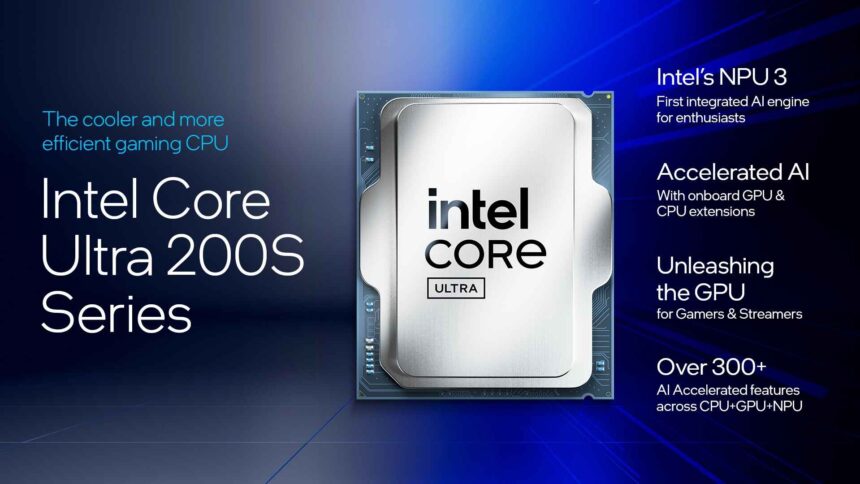Intel has just unveiled its latest Core Ultra 200S desktop processor generation, built on the new Arrow Lake architecture. While this generation offers modest performance boosts, the real highlight is its significant advancements in efficiency.
Intel reports a 9% IPC improvement for the P-cores and a 32% boost for the E-cores compared to the 14th generation, leading to up to a 13% increase in multi-threaded performance. Additionally, this generation features a 40% reduction in package power, resulting in lower temperatures.
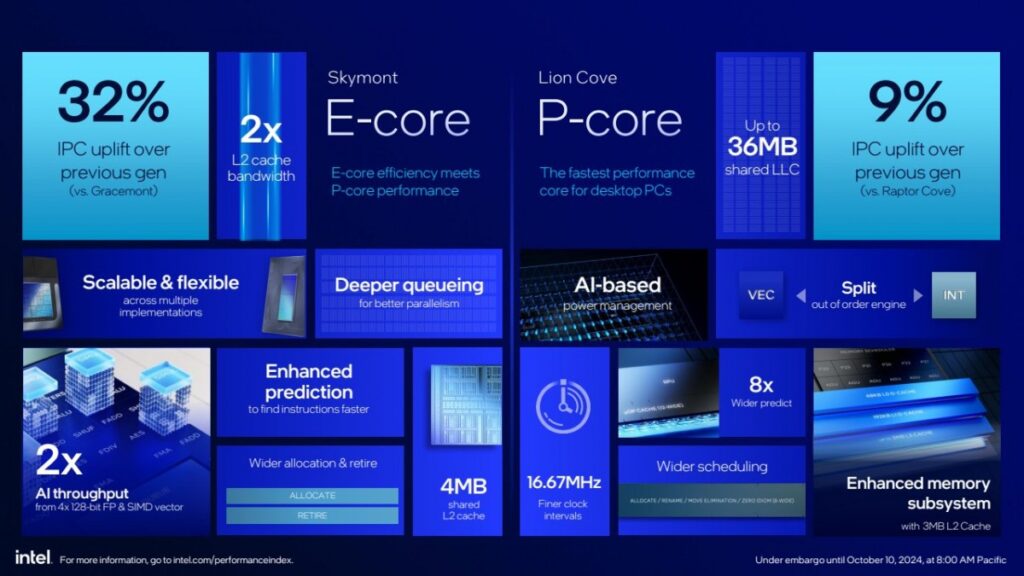
The new Arrow Lake chips feature a redesigned tile-based architecture, moving away from Intel’s traditional monolithic design. Each component CPU, GPU, SoC, and I/O has its dedicated tile, along with a base and filler tile. This setup allows the P-cores and E-core clusters to share an L3 cache while having their own L2 caches, improving resource management efficiency.
Today, Intel announced five new SKUs, including the flagship Core Ultra 9 285K, which replaces the Core i9-14900K. The lineup also features the Core Ultra 7 265K and 265KF, replacing the i7-14700K and 14700KF, along with the Core Ultra 5 245K and 245KF, which take the place of the i5-14600K and 14600KF.

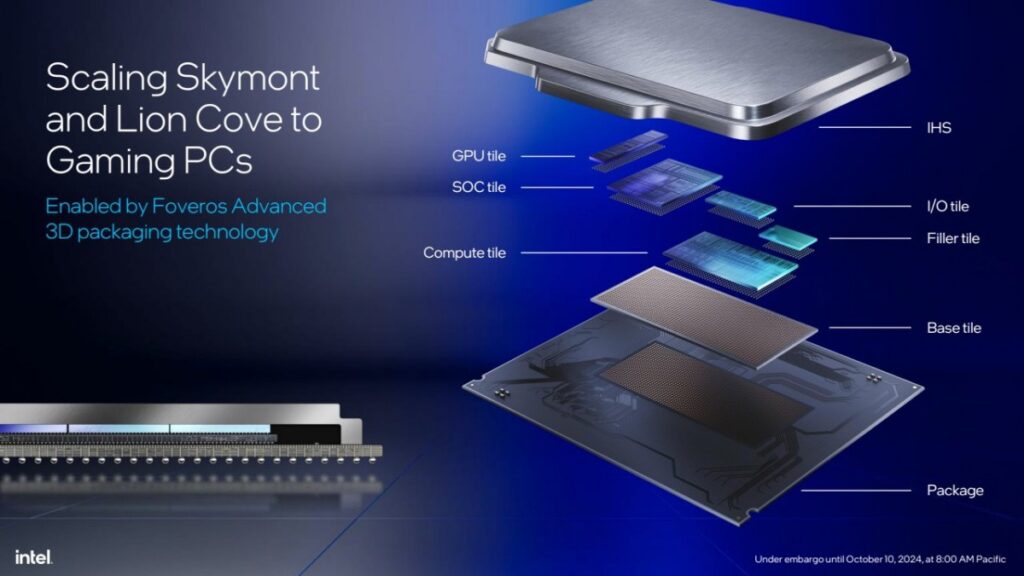
The 285K features an 8P+16E core design, while the 265K comes with 8P+12E cores. The 245K has a configuration of 6P+8E cores. While similar to the 14th generation, a key change is the removal of Hyper-Threading, meaning each P-core now has a single thread, like the E-cores.
All models with an integrated GPU have 4 Intel Xe Cores and a built-in NPU capable of 13 TOPS.
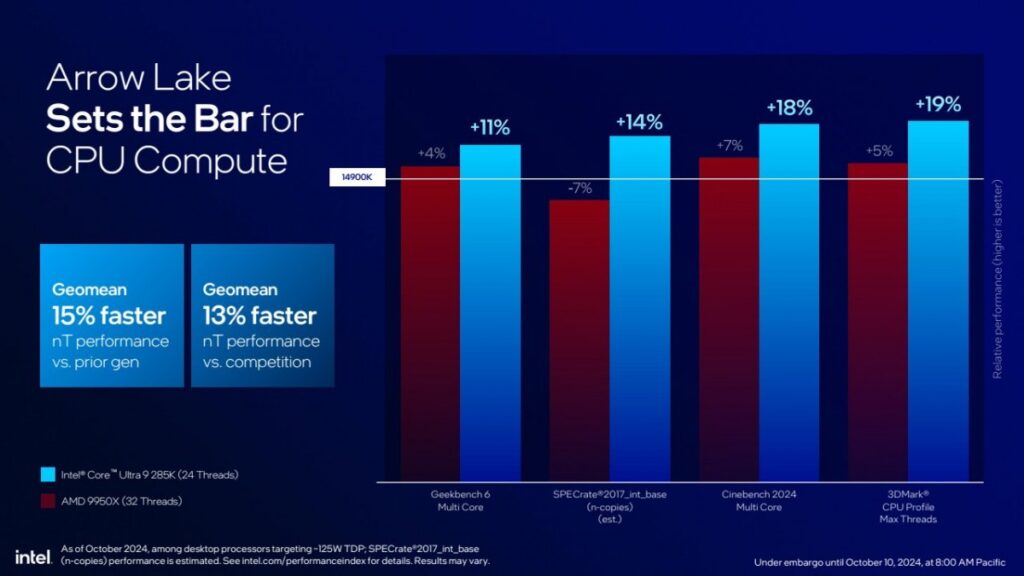
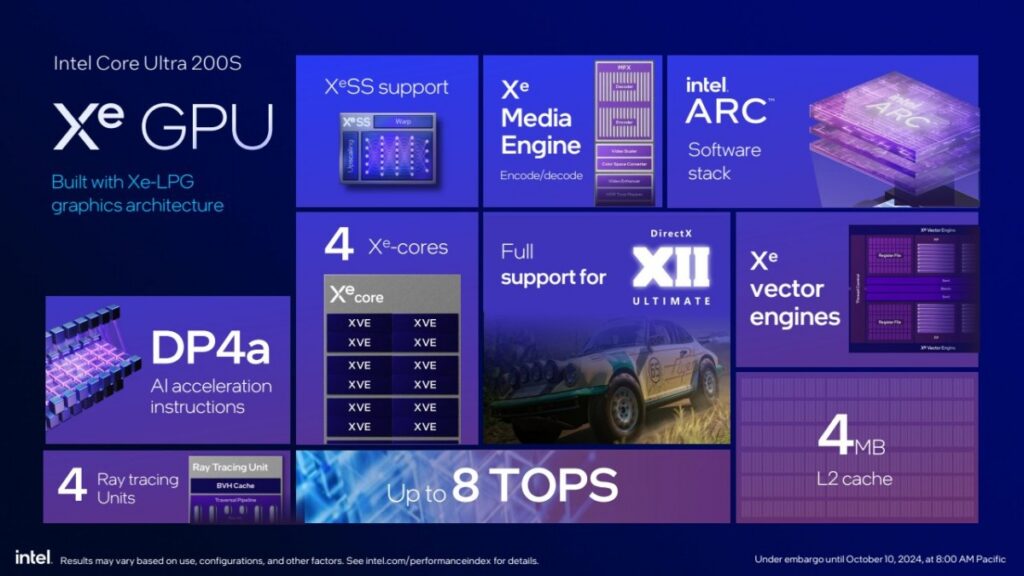
Intel has also adjusted the clock speeds for the 200S series compared to previous generations. The flagship 285K now reaches a maximum of 5.7GHz, down from 6GHz on the 14900K. The 265K and 245K also see slight reductions in their clock speeds compared to their predecessors.
When it comes to performance, Intel has made some mixed claims, primarily focusing on the flagship 285K. However, it’s worth noting that the company hasn’t provided any performance data for the 265K and 245K models.
Intel claims the 285K is 8% faster than the 14900K and 4% faster than the 9950X in single-threaded tasks. In multi-threaded workloads, it outperforms the 14900K by 15% and the 9950X by 13%, while consuming half the power of the 14900K for the same performance.
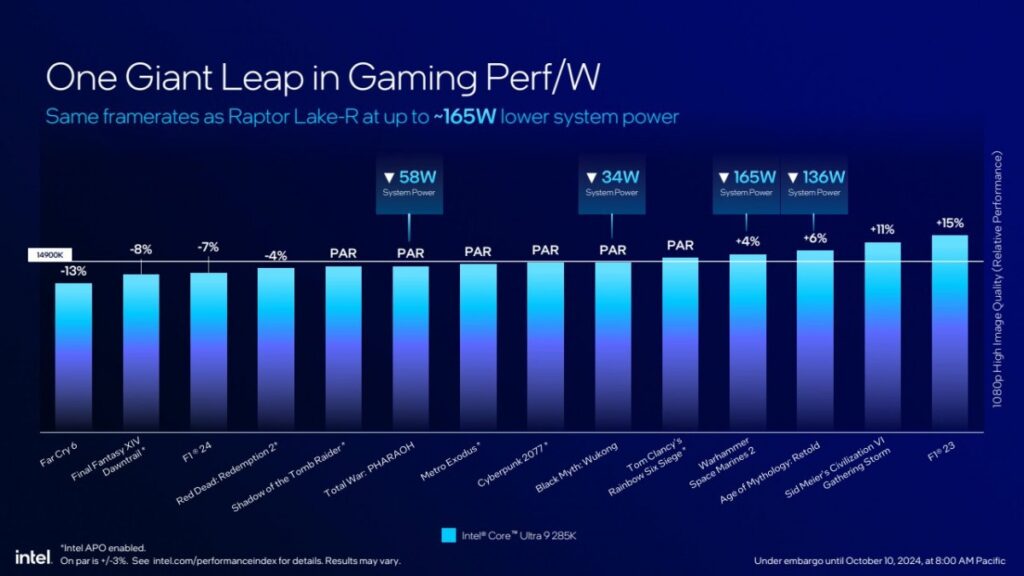
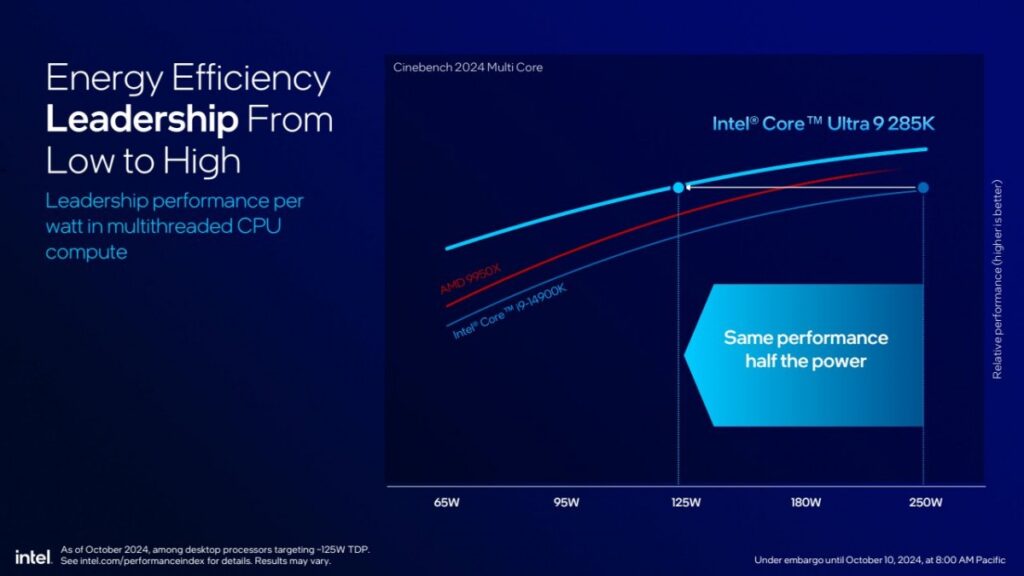
In gaming performance, the Intel 285K matches the 14900K, offering similar frame rates in most titles. However, it achieves this with significantly lower power consumption, averaging a reduction of about 73W, and up to 165W in some cases. So, while the frame rates remain the same, power usage is notably lower.
Lower power consumption also translates to less heat generation. Intel claims that the 285K runs, on average, about 13 degrees cooler than the 14900K, which is a nice benefit for maintaining a more comfortable system temperature.
That said, while the 285K is more efficient than the 14900K, it doesn’t necessarily mean it consumes less power overall. Like the 14900K, the 285K has a maximum turbo power of 250W. The same goes for the 265K, while the 245K has a maximum of 159W. So, even though the 285K runs cooler, its peak power consumption remains quite high.
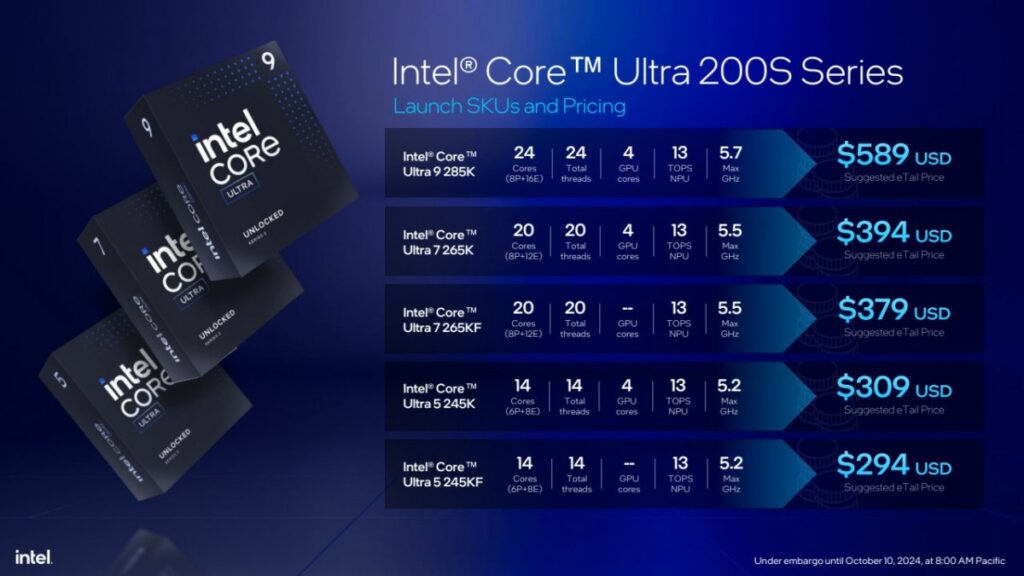

The new generation of processors introduces a new socket and motherboard chipsets. The 200S series chips are compatible with the LGA1851 socket and the Intel 800 Series chipset. Compared to the 700 Series, the 800 Series offers more PCIe lanes and no longer supports DDR4 memory. On the memory front, all the new chips support the new JEDEC standard of 6400MHz, with Intel recommending 8000MHz for optimal performance.
The Core Ultra 9 285K is priced at around $589 (~ ₱32,440), while the Core Ultra 7 265K comes in at about $394 (~ ₱21,550). The Core Ultra 5 245K is priced at $309 (~ ₱17,040). Sales and pre-orders will begin on October 24.



